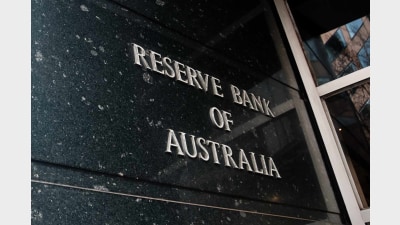The digital future of asset servicing


Custodians have come a long way since their origins as the guardians of assets over a century ago. As an industry, asset servicing is becoming increasingly disintermediated, integrated, and collaborative.
Industry participants will need to evolve and collaborate if they want to competitively position themselves for the future. Emerging digital infrastructures, and the rapid digitisation of existing processes, are fundamentally changing the asset servicing industry, driven by increasing demand for efficiency and insight.
This evolution will require that each step becomes increasingly agile and collaborative. These changes will create new markets and products which, whilst there is still uncertainty about their ultimate form, have the potential to be truly disruptive.
Change in a brave new digital world
Today, custody is seen as a niche sector operated by a group of specialists, but the required skillset is evolving and is expected to change significantly by 2030.
Asset servicers have been supporting their clients using artificial intelligence, cloud computing, data analytics and blockchain technology. Beyond 2030, the industry will go even further. We anticipate that new, collaborative ecosystems will emerge that allow both digital and traditional electronic solutions to exist side by side.
By 2030, with the use of smart contract technology, we consider transactions could report themselves and asset servicers will have strengthened real-time assurance via blockchain to support more efficiency.
Digitalisation is also a significant driver of disruption. Today, the asset servicing industry is going through a process of digitisation and digitalisation simultaneously, though these are two very distinct things.
Digitisation is the process of moving paper content forward into the digital world, using machine learning and artificial intelligence to classify, ingest and analyse even non- structured data whilst digitalisation involves no paper in the process at all, assets, data and processes are digital native and at source.
Digitalisation is being driven by the growth of distributed ledger technology (DLT) and shared infrastructure, with standardised, commoditised processes being developed on those technologies. It is bringing about the advent of digital assets and other innovations including a growing shift towards decentralised finance (DeFi).
Two local examples of how this landscape is changing for securities service providers, is the Australian Securities Exchange (ASX) becoming the world’s first market infrastructure to deploy DLT at the heart of its clearing and settlement infrastructure by 2023.
In February 2020, the National Stock Exchange of Australia revealed a joint venture project to introduce a blockchain-based clearing and settlement system. This will help securities services providers connect to an immutable source of data, get access to real time data and also consider operational changes that allow concurrent workflow management and a move away from sequential messaging-based workflows.
Challenges with defi
Although the shift to a DeFi world has made digital assets more accessible to a wider group of investors, it is not without its challenges.
Institutional financial structures are likely to follow the trends we’re currently seeing in the retail space with an increasing demand for transparency and personalisation. Democratisation of investment access — enabled by advancements such as tokenisation and fractionalisation alongside the proliferation of digital assets — is likely to see the great democratisation of asset classes previously only accessible to large institutional asset managers or pension funds.
Last year, Northern Trust and Singapore based BondEvalue partnered to deliver integrated asset servicing for the fractional ownership of fixed income bonds. BondEvalue’s regulated exchange facilitates the trading of fractionalised investable assets based on wholesale assets, with Northern Trust as a strategic asset servicing provider.
The platform allows investors access to investments that were historically only available to larger institutions. This means any private individual, with even just a small amount to invest, can allocate to individual wholesale assets that they currently would not be able to access. By 2030, this type of service may be offered as standard by any asset servicer especially in alternative assets.
However, the variety of new developments, whilst offering significant opportunity for the industry, have the potential to create operational fragmentation, resulting in the necessity to navigate and manage multiple ecosystems simultaneously. From this arises a need for greater industry collaboration and standardisation.
We believe that the move from traditional, electronic solutions and capabilities to digital ones will not happen overnight and asset servicers will have a role in continuing to evolve. If investors allocate up to 10% of their portfolios to digital assets, for example, custodians will need to ensure that they have built the architecture to service and support that 10%. Otherwise, they may end up losing the other 90% of their business.
An example of this is the emergence of cryptocurrencies as an investable asset class. Northern Trust and SC Ventures, the innovation and ventures unit of Standard Chartered, launched Zodia, an institutional-grade custody solution for cryptocurrencies.
Increased regulatory burden
Globally, regulators are approaching the industry’s digital evolution with similar intentions but different methodologies, resulting in potential for ‘regulatory arbitrage’.
This emphasises the need for a shared taxonomy in how emerging technologies are regulated but also the requirement for a flexible and adaptive approach underpinned by a commitment to investor protection.
Taxonomy is important because, as new markets develop, and operational functions become self-learning and self-functioning, and with the integration of data becoming far easier, the issue of standardisation will be paramount.
The need for an efficient, regulated marketplace is essential in an industry juggling multiple ecosystems and stakeholders.
If emerging digital assets are treated differently to other assets, there is a risk that regulation will create a disparity across regions. Market advocacy is also an important value add for securities service providers to bring their voice to industry and influence regulatory outcomes to benefit clients.
The Australian Securities and Investment Commission (ASIC) recently released information for product issuers and market operators on how they can meet their regulatory obligations in relation to crypto asset exchange traded products (ETPs) and other investment products.
Key matters covered by ASIC include admission and monitoring standards, custody of crypto assets, pricing methodologies, disclosure and risk management.
The Senate Select Committee on Australia as a Technology and Financial Centre also released its final report on 20 October, 2021, with recommendations on developing a regulatory framework for crypto assets.
We also see opportunities in the future for markets to regulate themselves, based on algorithmic updates. Robo-auditors could also be used, which will make the markets more efficient, even for complex assets.
Recent regulations with a focus on accountability and governance have already encouraged the creation of new technologies for dramatically enhancing transparency. By 2030, questions of tax rates and repetition of associated data may well be eliminated through the intermediary chain. For effective regulation in a fast-moving technological world, it must be flexible and adaptive.
Similarly, in corporate actions, regulations will have significantly reduced competitive differentiation from corporate event announcements and disclosures. The asset servicing industry must adapt, and custodians’ competitive advantage will be determined based on their level of service and expertise for managing complex events.
Sustainability at the core
Sustainability is another driver of change within the industry — driven by investor demand and enabled by technological developments, asset servicers have an important part to play in enabling investors and stakeholders to track data, manage standards and inform decisions to create a more sustainable future.
It is clear following the recent COP26 summit that the private sector will lead the green recovery post COVID-19, committing over US$130 trillion ($179.6 trillion) of private capital to transforming the economy to net zero over the next three decades.
All these trends and themes will have significant ramifications and opportunities for the asset servicing industry. We believe that custodians and service providers must collaborate as members of a shared ecosystem.
Asset servicers and other industry participants will need to work together on platforms, and on shared infrastructure, to leverage market positions and to mutualise costs and create new revenue streams.
The asset servicers of the future will continue to be client centric and focused on asset safety. But they must also be flexible, agile, creative, and digitally enabled in ways we have never seen before, as new technologies, shifting institutional investing models and emerging market infrastructure entirely transform the financial landscape. The future for the new digital world is collaboration.
Leon Stavrou is head of Australia and New Zealand at Northern Trust.
Recommended for you
High risk, high return assets will become dangerous options for superannuation funds under the Federal Government’s planned $3 million superannuation changes, writes Brad Twentyman.
Economic policy can no longer ignore the macroeconomic impacts of Australia's superannuation system and the emerging policy implications, writes Tim Toohey.
In an age where climate concerns and social consciousness dominate headlines, it’s no surprise that investors are increasingly seeking investments that align with their values, writes Simon O’Connor.
How profit-for-member superannuation funds can embed 'commerciality with a heart' and marry a member-first culture with commercial outcomes.














Add new comment